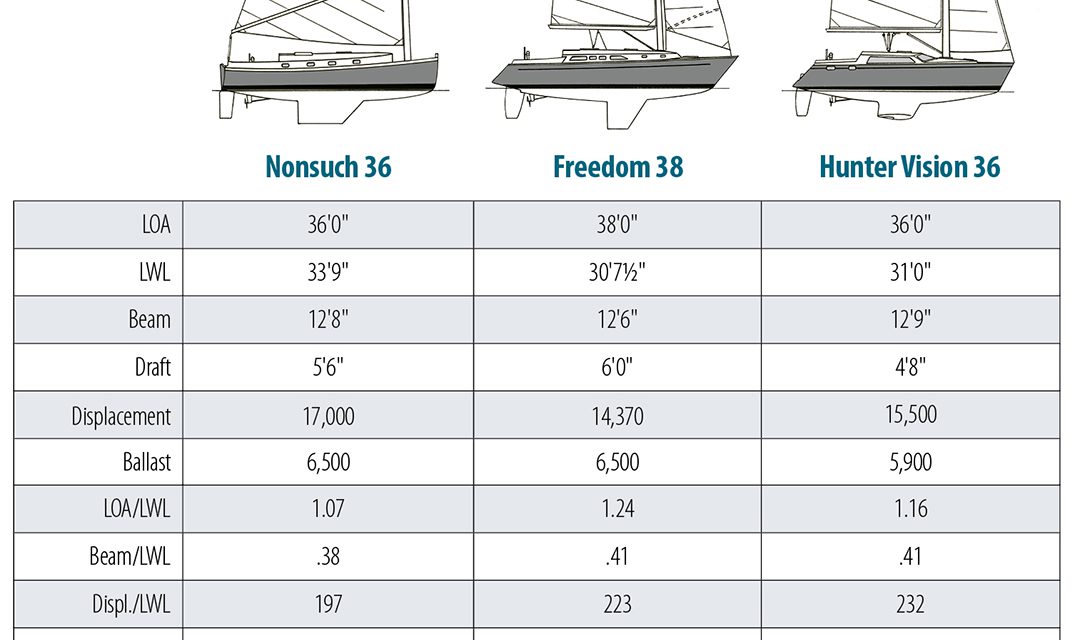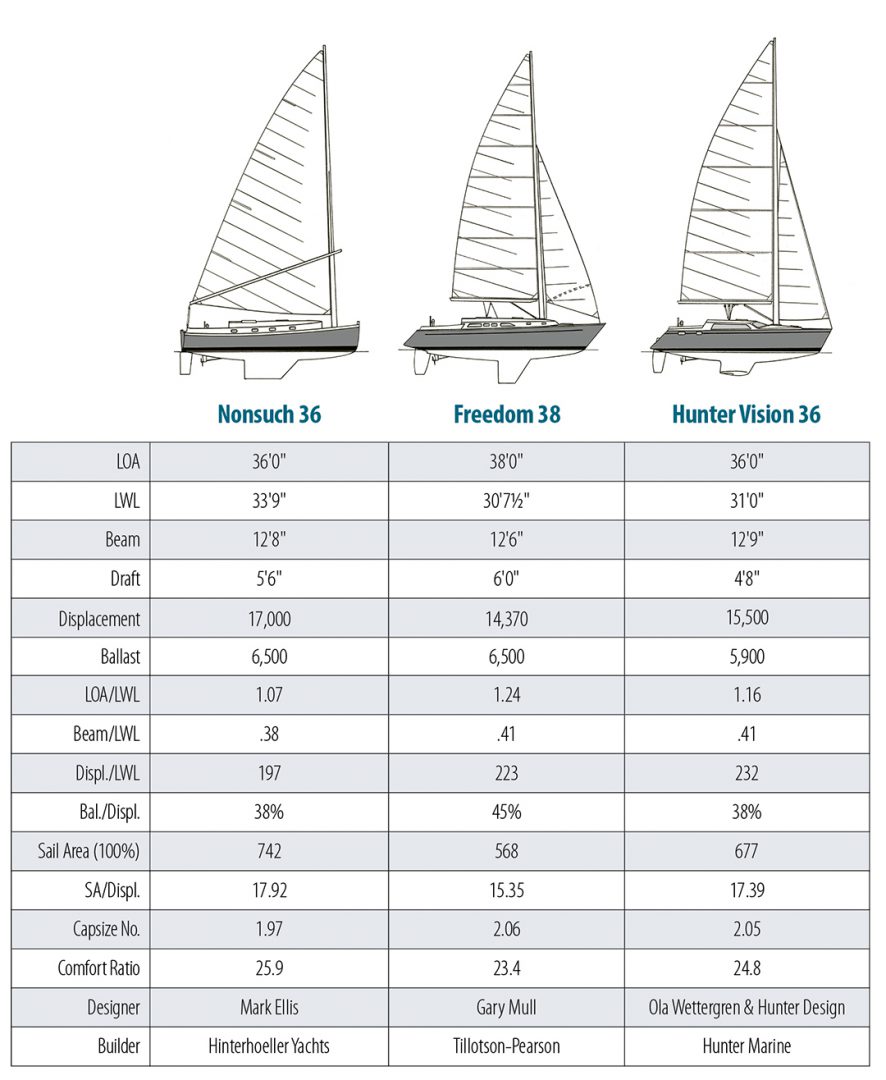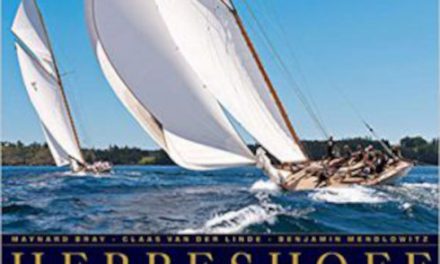…and Two More Freestanding-Rigged, Solid Sailers.
Looking for boats to compare to the Nonsuch 36, the obvious commonality has to be the freestanding rig. That certainly narrowed the choice, and the Freedom 38 (an elongated version of the Freedom 36) and the Hunter Vision 36 nicely fit that bill. Full disclosure: I was working with Mark Ellis while the Nonsuch 36 was in production at Hinterhoeller Yachts, and I was chief designer at Hunter Marine in Alachua, Florida, while the Vision 36 was in production, but both of these designs preceded my tenure.
Looking at these distinctive sail plans, note that the Nonsuch is a true cat rig with the mast located well forward in the “eyes of the ship.” In contrast, the Freedom and the Hunter position their masts far enough aft to allow for a forestay and small headsail; in fact, the mast is far enough aft in an area with enough beam to allow the installation of a stayed rig on these two designs.
All three of these boats take full advantage of the freestanding rig, but the sailplan configuration of the large main and small jib of the Freedom and Vision is not tied to the freestanding rig, while the Nonsuch is. During this same period, other designers were making similar efforts to make sailhandling easier on traditional stayed rigs by moving toward larger mainsails and smaller, non-overlapping jibs, and fractional rigs; the Gilbert 30 is a good example in cruising boats and J/Boats an example in racing designs.
Adding a small headsail means the sail area is split between two sails, so the main is proportionally smaller for these boats than for the Nonsuch. Sixty-five percent of the Freedom’s 572-square-foot total sail area is in the main, while 70 percent of the Vision’s 677 square feet is in its main. All of the Nonsuch’s 742 square feet of sail area is in its large single mainsail. The forestay on the Vision and Freedom also helped restrict the aft movement of the mast, so the boom would not droop into the cockpit and the mast would not pump as much in a seaway.
Note also that the Freedom and Vision employ a conventional main boom with mid-boom sheeting and vang, compared to the Nonsuch’s self-vanging wishbone boom. Other than the freestanding mast, the only departure from a normal sloop rig in the Freedom is the use of the half-wishbone jib boom marketed as the “camberspar.” The Nonsuch and the Vision have more than adequate sail areas resulting in sail area/displacement ratios above 17, while the Freedom lags a bit at a little over 15.
Let’s take a look at the hulls under these rigs. Certainly above the waterline the Nonsuch’s profile reflects its catboat heritage. However, if you were to place your hand over the rigs on the drawings of the Freedom and Vision, these designs would not be much different in profile than stayed boats from the same design offices. This has ramifications when looking at the numbers. Note that the Nonsuch has the longest waterline length at 33 feet 9 inches, approximately 2 feet longer than the Freedom and the Vision. This longer waterline is largely a result of the severely truncated overhangs inherent in the catboat aesthetic. The length overall of the Nonsuch is only 7 percent longer than the waterline length, while it is 24 percent longer for the Freedom and 16 percent longer for the Vision. If the Nonsuch 36 had the same length overall/length waterline ratio as the Freedom at 1.24, it would be just shy of 42 feet long!
This obscuring of true size is also evident in the displacement figures. The Nonsuch is a full 2,600 pounds heavier than the Freedom and 1,600 pounds heavier than the Vision—this, despite the Nonsuch having the lowest displacement/length waterline ratio of the three at a performance-oriented 197, compared to 223 for the Freedom and 232 for the Vision. These differences in waterline length and displacement on a short length overall highlight the marketing challenges that always plagued the Nonsuch models when customers would invariably compare boats of the same overall length. All Nonsuches are substantially larger, and thus more expensive, than their length overall would indicate.
Note that the beams of these three boats are within 3 inches of each other. When comparing these beams to waterline length, we see that the Nonsuch is relatively narrow at .38 and the Freedom and Vision beamier at .41. This would indicate that not only have the ends of the Nonsuch been truncated, but the waterline length has possibly been stretched a tad as well. These similarities in beams, combined with variations in displacement, yield a slightly more favorable capsize number for the heavier Nonsuch at 1.97, and a less desirable 2.06 for the Freedom and 2.05 for the Vision. The comfort ratios also follow the displacement variation, with the heavier boats faring better than the lighter.
These are three large boats that incorporate the advantages, real and perceived, of the freestanding rig. All are attractive, but to my eye it is the earlier Nonsuch that incorporates the freestanding rig into a complete and harmonious package combining innovation with tradition. She is still a remarkably good-looking boat after all these years and inspires pure awe when seen sailing in any sort of breeze.






